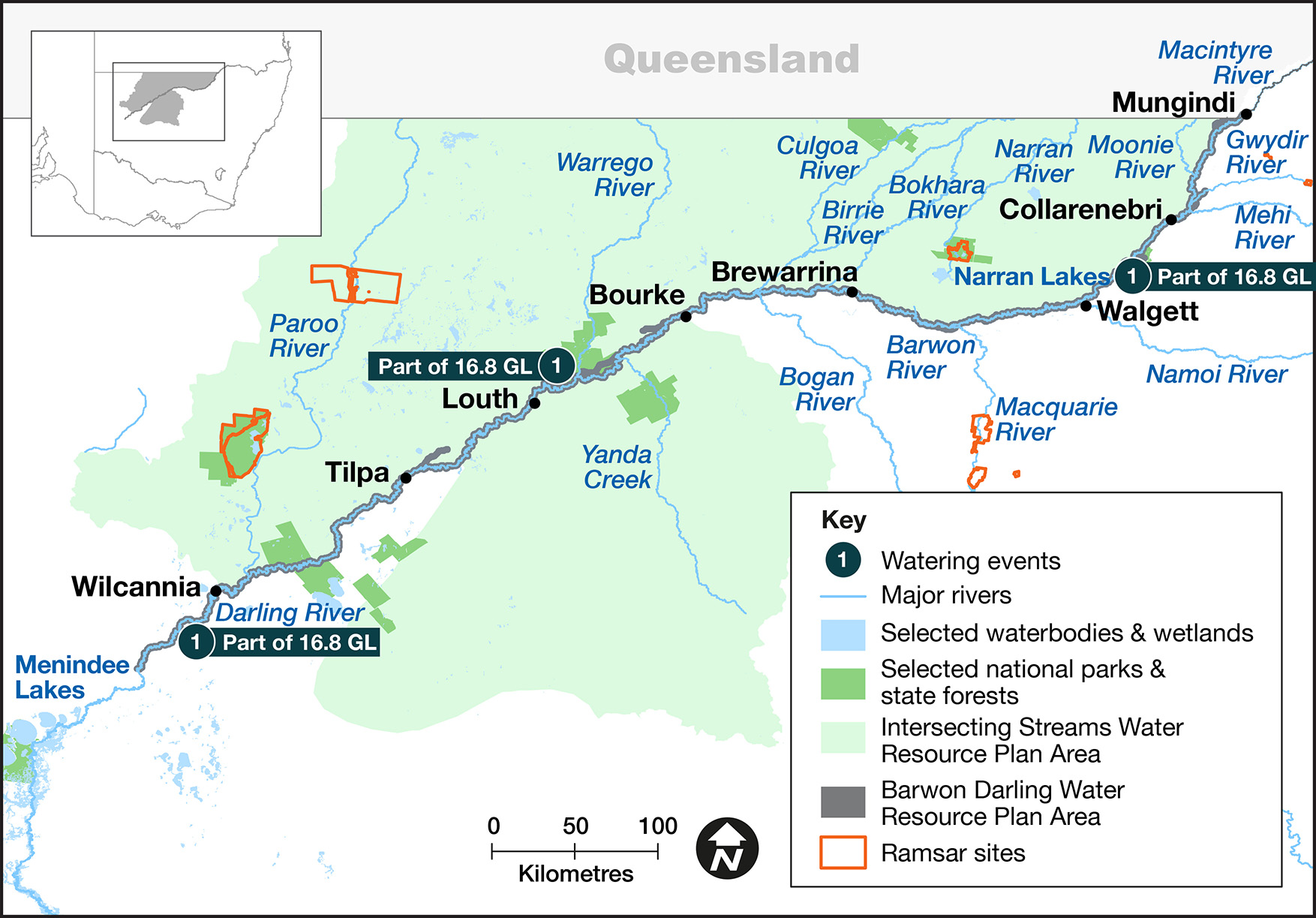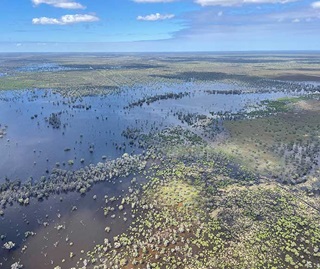Connectivity, floodplain inundation and native fish outcomes were the focus for environmental water managers in the Barwon–Darling catchment in 2022–23.
Key outcomes
Under wet to very wet conditions, NSW environmental water managers worked with the Commonwealth Environmental Water Holder to protect water for the environment under licenses in the late part of the water year. However, for much of the year natural high flows delivered significant outcomes for the environment which included opportunities for fish movement throughout the system.
Outcomes included:
- favourable conditions for native fish recruitment
- connectivity with Menindee Lakes and the Lower Darling – Baaka with 6,719 gigalitres (GL) passing Wilcannia and an additional 2,976 GL travelling down the Talyawalka Creek and reconnecting with the Lower Darling – Baaka
- periodic inundation of riparian zones and floodplains improving vegetation condition
- flows and inundation of instream and floodplain Aboriginal peoples’ priority sites.

Catchment conditions
During the first half of the 2022–23 year, the Barwon–Darling catchment and its tributaries experienced La Niña weather conditions resulting in high rainfall and moderate temperatures.
Flows were consistently above small fresh levels and extended periods of large fresh and overbank flows also occurred. This negated the need to protect flows in Barwon–Darling throughout most of the water year.
In early 2023, flows began to recede with only a few brief small fresh events.
About the catchment
The Barwon–Darling catchment is in the north-western part of NSW, running approximately 1,600 kilometres down the Barwon–Darling river system. Located in a semi-arid climatic zone, rainfall is typically low.
Several major river systems flow into the Barwon–Darling, including the Border, Moonie, Gwydir, Namoi, Wambuul (Macquarie), Culgoa, Warrego and Paroo, with the Barwon–Darling connecting the river systems of the northern Murray–Darling Basin with those of the south.
The Barwon–Darling catchment comprises the unregulated section of the river channel from the junction of the Macintyre and Weir rivers near Mungindi through to Lake Wetherell, which is part of the Menindee Lakes system. This includes distributary creeks and a myriad of floodplain wetlands, billabongs, and anabranches.
Water for Country
The Barwon–Darling catchment is Country to the Euahlayi, Barkindji, Murrawarri, Ngemba, Gomeroi/Kamilaroi and Ngiyampaa Aboriginal peoples.
Water for Country is environmental water use planned by the Department of Planning and Environment and Aboriginal people to achieve shared benefits for the environment and cultural places, values and/or interests.
In the 2022–23 water year in the Barwon–Darling catchment, environmental water managers:
- supported Aboriginal peoples between Bourke and Mungindi to identify priority sites for environmental watering
- supported projects led by the Ngemba and Murrawarri nations, which form part of the Darling River Snail Survey Project
- supported a tea tree mapping project with various nations led by the Dharriwaa Elders Group
- supported nation-led planning for the Toorale Cultural Watering Plan
- started to build relationships with Barkindji through the Toorale Joint Management Committee and various nations through Dharriwaa Elders Group with on Country meetings.




